#Teotitlán del Valle
Explore tagged Tumblr posts
Text

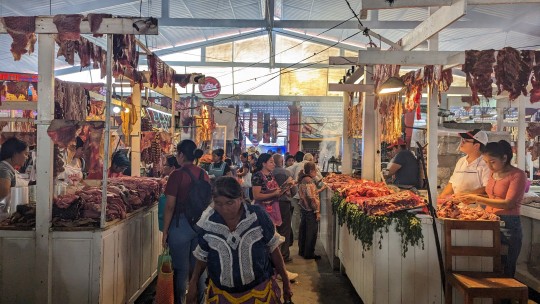
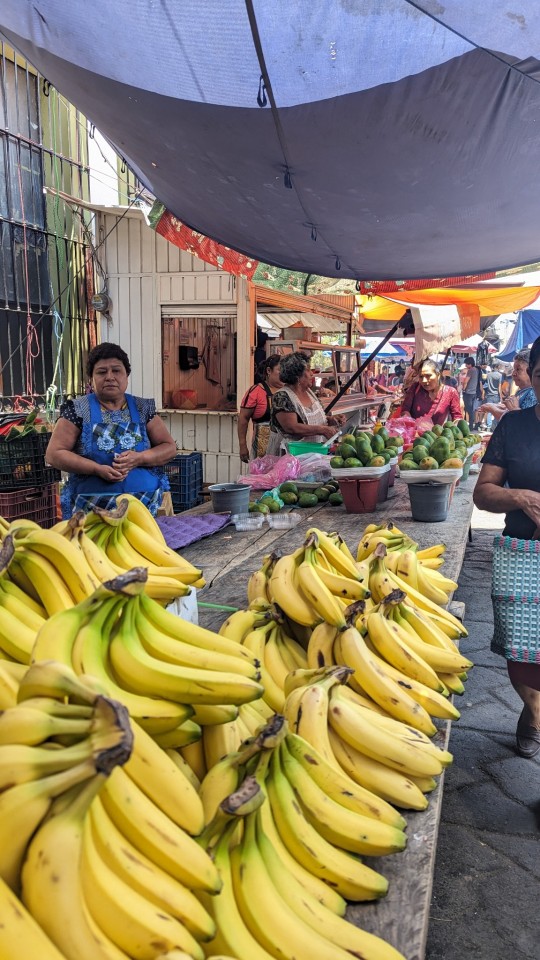
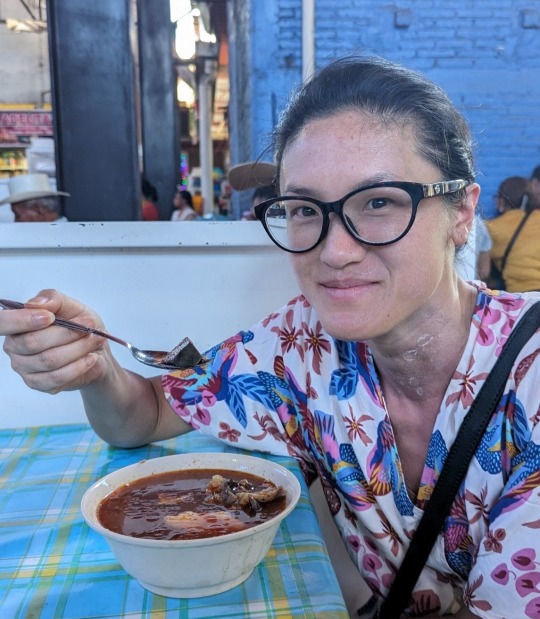
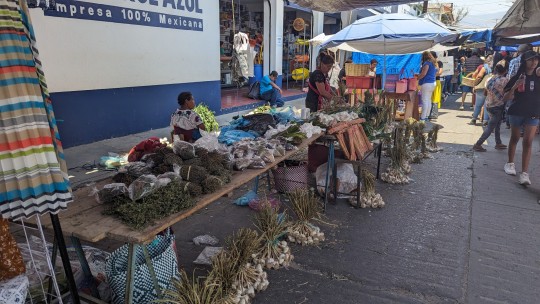

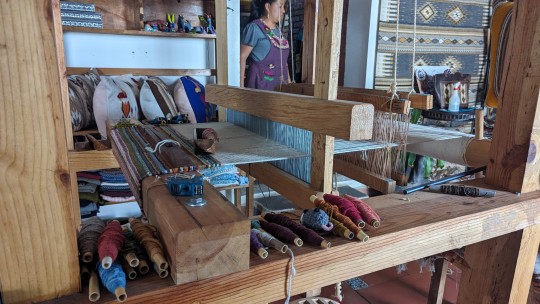
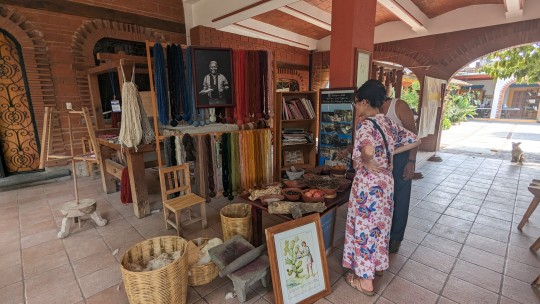
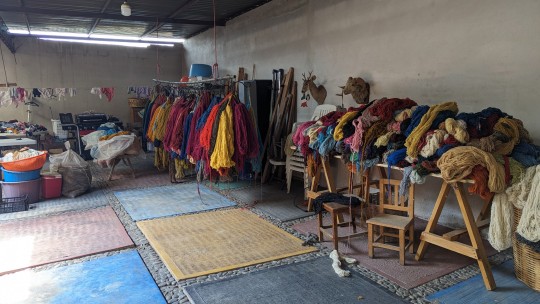
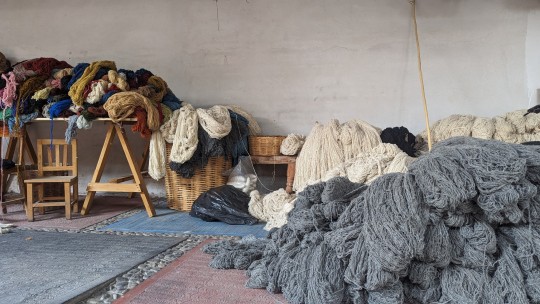
Tlacolula de Matamoros and Teotitlán del Valle
The hostal recommended going to Tlacolula for their big Sunday market. It's 30 min away east of town. There is a collectivo - a shared taxi with red and white colours - parked in Mercado Central to take you for 30 pesos. We mostly went to discover new food. There isn't anything particular to buy there.
On our way back, we stopped by Teotitlan del Valle, the village where most wool products (rugs and bags) are made. I wasn't impressed with the town. But it was Sunday, so that's probably the reason it was so quiet. Most shops were selling the same things you could find in Oaxaca, except for a few studios who do commissions or originals. The benefit of this trip was to understand how they handmade their rugs, and to see their workshops. If you visit this village, just avoid Sundays.
A tuk-tuk will take you from the collectivo stop to the center of the village for 10 pesos.
0 notes
Photo
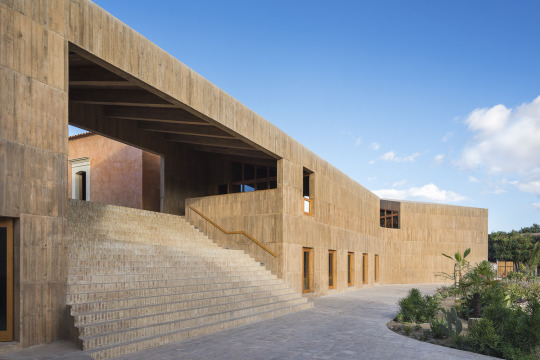

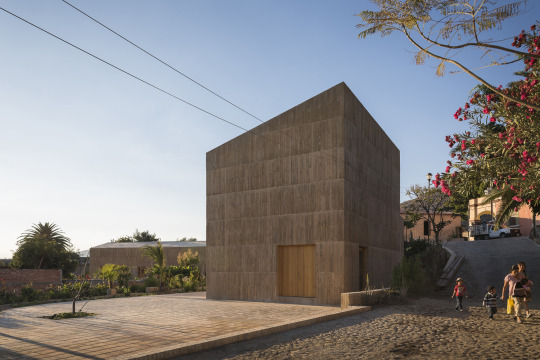


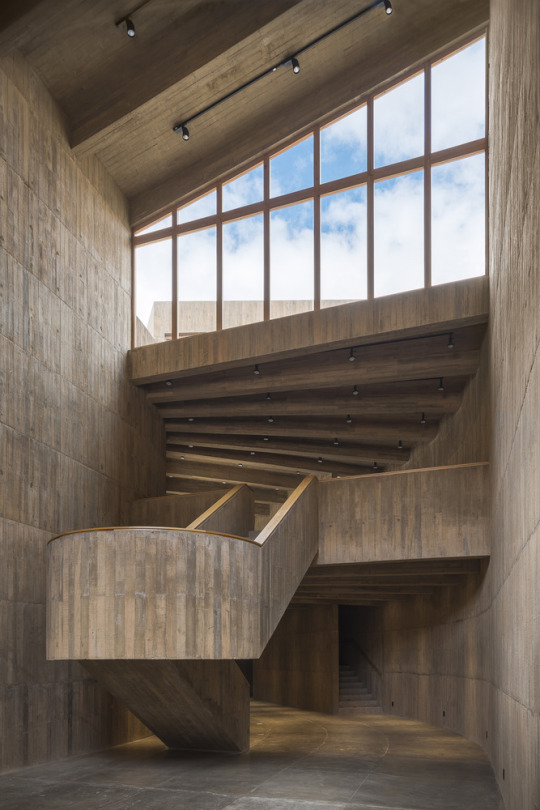
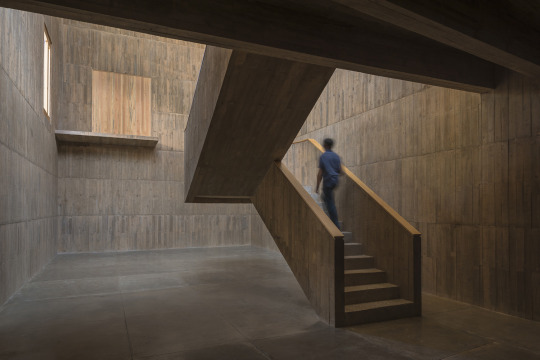
Teotitlán del Valle Cultural Center, Oaxaka, Mexico - PRODUCTORA
https://productora-df.com.mx/en/
#PRODUCTORA#architecture#building#design#modern architecture#minimal#beautiful design#facade#interiors#concrete#brutalist#concrete architecture#timber#cultural center#culture#oaxaca#mexico#mexican architecture#staircase#atrium
376 notes
·
View notes
Text
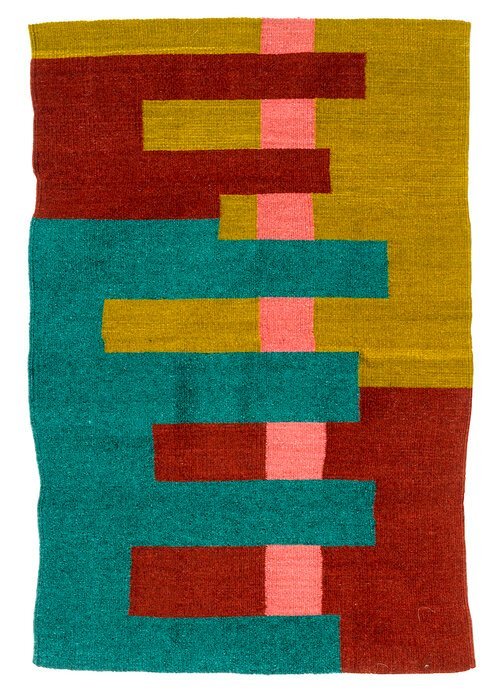
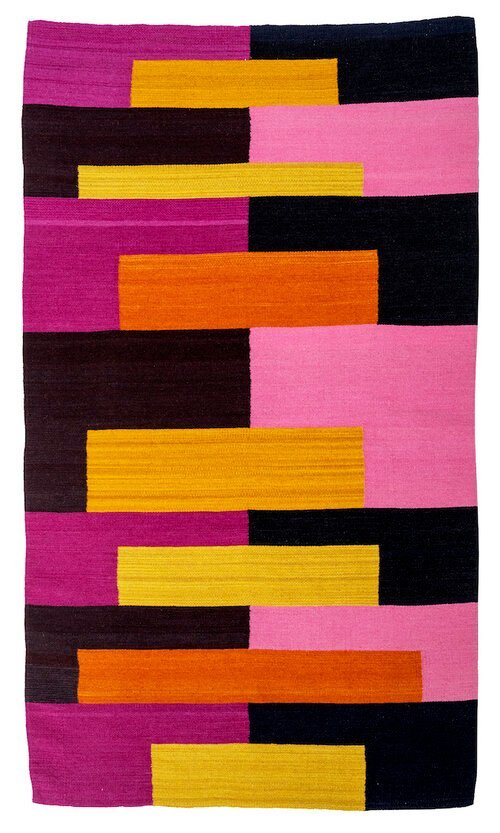
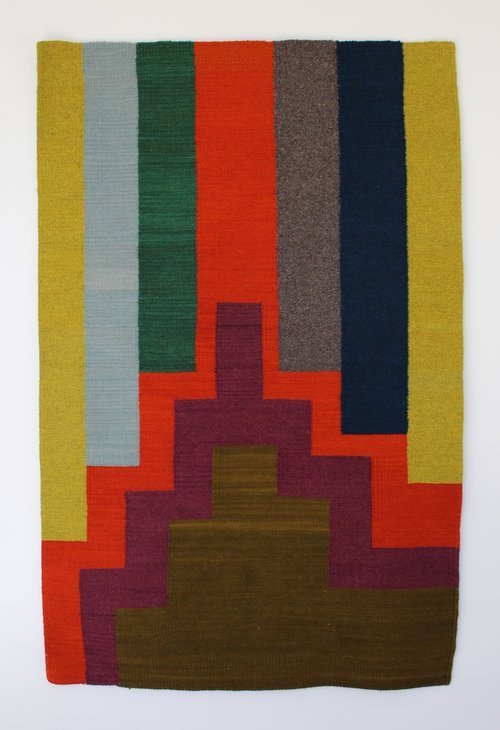
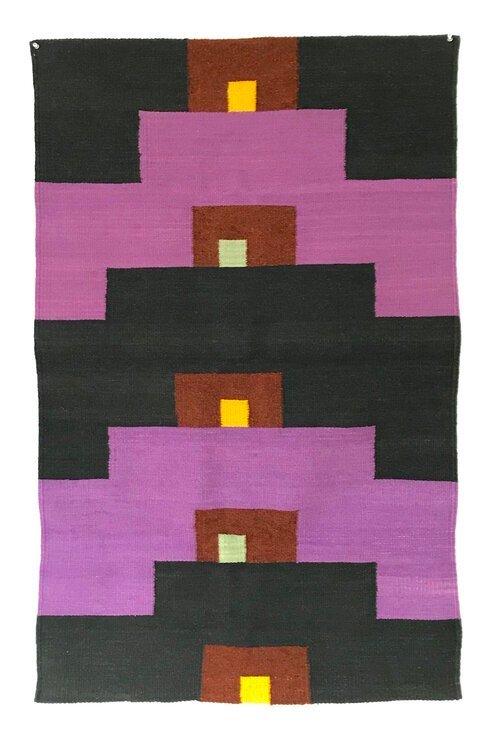
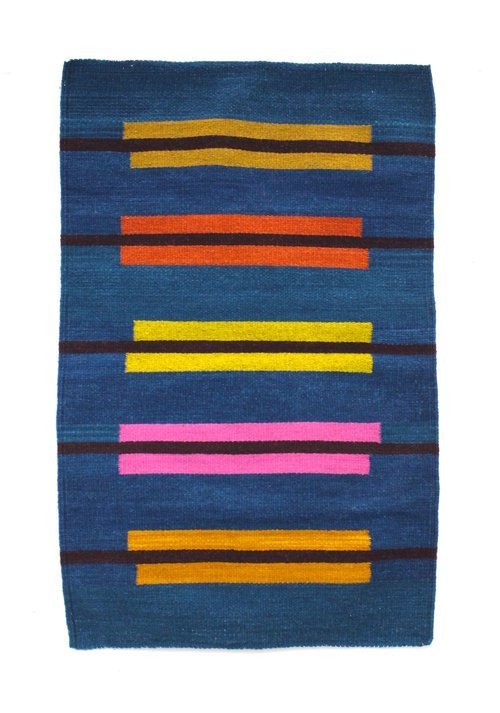
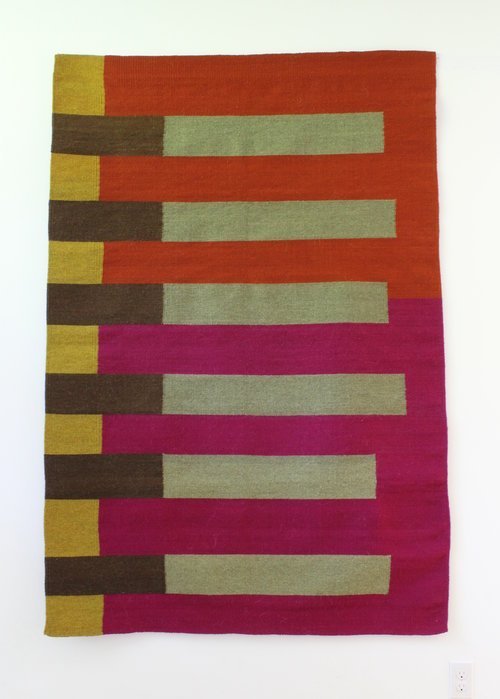
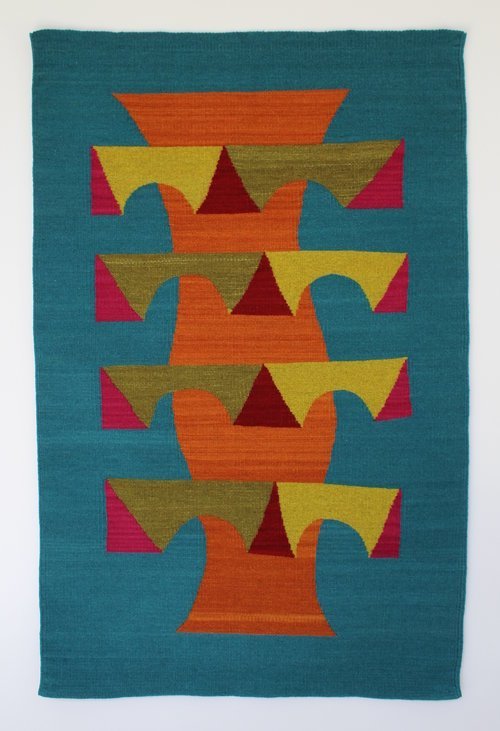
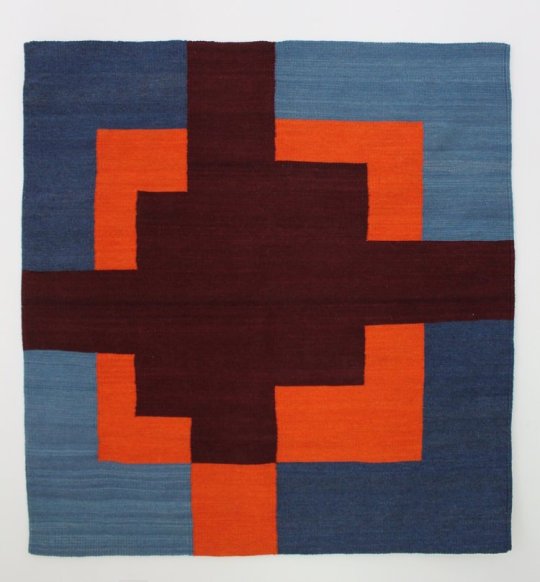
Martha Clippinger, (b. 1983, American), lives and works in Durham, NC. Collaboration with weavers in Oaxaca, Mexico. Hand dyed wool rugs.
Through the support of a Fulbright grant, Martha Clippinger spent 2014 studying the Indigenous textile traditions of Oaxaca, Mexico. There she met weavers Licha González Ruiz and Agustín Contreras López of Teotitlán del Valle, a Zapotec village renowned for its woolen tapetes (Spanish for “rugs”) that are woven on upright pedal looms. The couple agreed to translate one of her designs into wool, and they’ve been working together ever since.
Born and raised in Columbus, Georgia, Martha Clippinger received a BA from Fordham University and an MFA from Mason Gross School of Art, Rutgers University.
30 notes
·
View notes
Note
Hi, my mom just told me about how she wasn't taught Zapotec as a child because of anti-indigenous racism. She was born in San Juan Teitipac, I believe my grandmother and past relatives spoke Central Valley Zapotec. I'm not sure where to go from there to try and learn the language.
Note: a few words she remembers but not sure of spelling:
Muchito/mushito/muxito?- little boy
Wixa/wija/güixa/güiga? - field rat/large rodent they ate
Could you point me in the direction of which dialect this could be? Thank you!!
Hi! Ooh, okay, I'm not sure how much help I can be because I only know a few words and phrases in the variation of the Zapotec language my family speaks.
I found out more about the Zapotec we speak from this paper. However, it focuses on the village my mother and her side of the family was born in and it's only in Spanish and I have only read a small part of it. If you can read Spanish this might help. For example, according to the paper:
The Zapotec spoken in Oaxaca is divided into four variants:
Zapotec of the Valley (Bene Lashe)
Southern Zapotec (Bene Chhaa Nhisdao)
Isthmus Zapotec (Bene Yeze’e)
Zapotec of the Sierra (Bene Ya’a)
From my understanding, San Juan Teitipac is in the Tlacolula District which has many variants of the Zapotec language. This would be the "valles centrales" (Central Valleys) shown here.

Furthernore, according to wikipedia:
San Tlacolula Valley Zapotec is a cluster of Zapotec languages spoken in the western Tlacolula Valley, which show varying degrees of mutual intelligibility. All varieties of Valley Zapotec are endangered. The languages in this group include:
Santa Ana del Valle Zapotec
Teotitlán del Valle Zapotec
San Lucas Quiaviní Zapotec
Tlacolula de Matamoros Zapotec
San Juan Guelavía Zapotec
San Jerónimo Tlacochahuaya Zapotec
San Juan Teitipac Zapotec
This same wikipedia page also leads to an online Tlacolula Valley Zapotec dictionary here.
The Ticha project talks about and has resources about Colonial Valley Zapotec.
There are also youtube channels about the Zapotec though some are old and haven't updated:
Zapotec
Valley Zapotec Language Lessons
Mexican Excellence also posts a lot of great videos about decolonizing and speaking overall of the indigenous Mexican experience.
Connecting to other indigenous Zapotec speakers may help you too in case they have other resources. I've seen a good amount of Zapotec people and other indigenous Mexicans on Tik Tok. I follow hundreds of people (majority of Mexican descent at @kurami_rocket) so, I'd have to go through all of them to find my fellow Zapotec people 😅 BUT you can simply search #zapotec on Tik Tok as recently as a week since they uploaded vids to find them and ask for help. And please don't be afraid to ask others for help like with me! Many of our fellow indigenous brothers and sisters would be more than happy to try and help!
I wish I could give more information, but I would need to try and do very in depth research to find pieces and clues that may help you.
It's definitley very hard and difficult reconnecting because of the colonialism and genocide our people suffered and continue to experience. Information online is vastly scarce and hard to come by. Especially learning indigenous languages online. Finding any and all resources truly is valuable.
If you haven't tried already, the best bet is always to ask your family members if you can. Especially older family members such as grandparents, aunts, uncles, etc as they may know a lot that they have never told you.
I hope this helps you start your journey in hopefully being able to learn more!!
Also if any other tumblr users have read this far, please feel free to reblog this and share any resources you may know too!
@sephirajo Idk if you may have any resources or something to add?
And @kaoren please feel free to drop me another ask or dm if you have more questions!! :)
13 notes
·
View notes
Text
Avance del proyecto transversal
Oaxaca
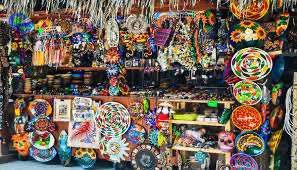
Que es una artesanía: Se denomina artesanía tanto al trabajo como a las creaciones realizadas por los artesanos (persona que realiza un trabajo manual). Es un tipo de arte en el que se trabaja fundamentalmente con las manos, moldeando diversos objetos con fines comerciales o meramente artísticos o creativos
Características
- [ ] elaboración de objetos que se realiza de forma manual y generalmente se utilizan máquinas y herramientas de mano
- [ ] utilitarias, estéticas, artísticas, creativas, vinculadas a la cultura, decorativas, funcionales, tradicionales, simbólicas y significativas religiosa y socialmente
- [ ] se crea como producto, duradero o efímero, cuya función original está determinada en el nivel social y cultural
- [ ] Los artesanos realizan su trabajo a mano o con distintos instrumentos propios de manualidades, por lo que hay que tener cierta destreza y habilidad para realizar su trabajo
1 Olla de de barro negro
Como se hacen:
Su proceso empieza con el remojo de la tierra y el dejarlo sedimentar, para así quitar todas las impurezas que esta tenga. Cuando este el artesano la amasa hasta que suavizarla y le da forma a cada una de la piezas, terminando las deja secar a la luz solar durante 4 días o hasta que no haya manchas en el barro
Material
- [ ] Torno primitivo, tepalcates para alisar, bruñidor de piedra.
- [ ] Se prepara el barro con mucho cuidado, se realiza el modelado a mano en partes, se seca al sol
- [ ] se procede al acabado que puede ser con una o varias técnicas, como alisado, bruñido, calado, esgrafiado y, en su caso, pintad
En qué ciudad se realiza esta artesanía
San Bartolo Coyotepec en Oaxaca, son dignos representantes de una de las artesanías más importantes de Oaxaca: el barro negro.
Cuál es su utilidad:
El barro negro principalmente tiene fines decorativos y algunos de tipo utilitario. Destacan las vasijas caladas, llenas de detalles y formas vegetales, muy bellas.

2 Artesanías de palmas Mixteca
Como se hacen:
El proceso de tejido consiste en cortar la especie correcta de hojas y luego secar durante aproximadamente media semana en el hermoso sol mexicano. La palma se tiñe entonces con tintes naturales, si es que se requiere color; luego las hojas se tejen juntas para darles la forma deseada
Material:
- [ ] Hojas de palma
- [ ] Hebras para el tejido
- [ ] Polea
- [ ] El torno
- [ ] La rueda
En qué ciudad se realiza esta artesanía:
La Región Mixteca abarca principalmente la parte noroeste del estado de Oaxaca y parte de los estados de Guerrero y Puebla. Esta cultura es prehispánica y una de las más antiguas y extensas de Mesoamérica. Debido a sus tradiciones y estilo de vida, la mujer realizaba las labores domésticas y logró desarrollar habilidades para manejar materiales de la región.
Cuál es su utilidad:
producción de adornos y artesanías como, canastos, tortilleros, abanicos, petates, bolsas, carteras e incluso adornos Estrella otros.
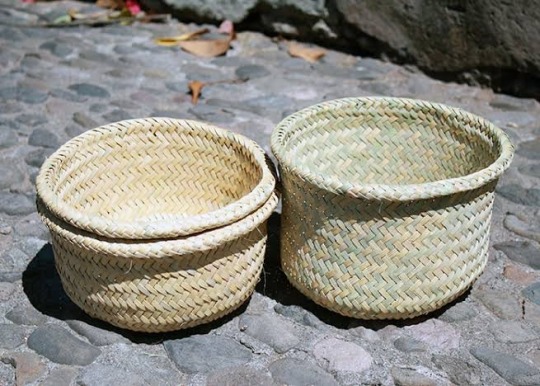
3 Colorido tapete
Como se hacen: Se hacen bajo la técnica de telar de pedal, en el que el hilo de lana pura se teje completamente a mano. Primero se carda y se hila la lana, se elaboran los colores, y de acuerdo a los diseños, las madejas de hilo se tiñen en una tina con agua hirviendo con el tinte ya preparado y un ácido o jugo de limón para que el color se impregne y no se despinte. Los colores con que se tiñen son producto de la misma naturaleza.
Materiales
- [ ] Manos de los artesanos
- [ ] Color
- [ ] Rueca
- [ ] Jabones naturales
- [ ] Hilo de Lana
En qué ciudad se realizó esta artesanía:
El proceso de producción artesanal de tapetes de lana de la comunidad de Teotitlán, ubicada en la región de los Valles Centrales de Oaxaca (Oaxaca, México), se organiza con un alto grado de valoración de los elementos étnico-religiosos com- partidos en la comunidad
Cuál es su utilidad: Aislantes térmicos conserva el calor cuando hace frio y permanece fresca cuando hace calor además que adorna los suelos dándole un toque a tu casa.
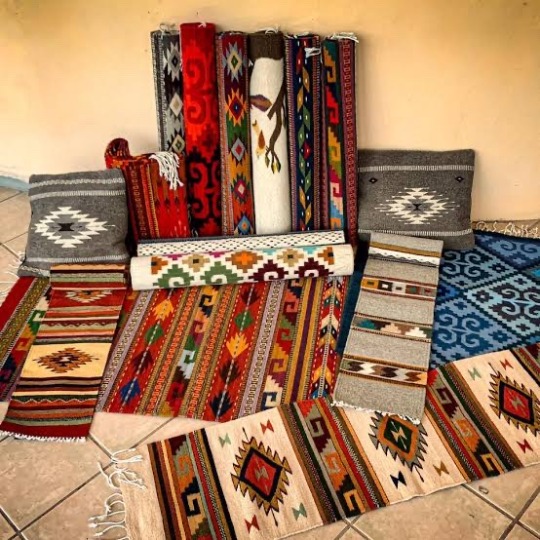
4 Los maravillosos textiles
Como se hacen: El procesamiento usual de los textiles incluye 4 etapas: formación del hilo a partir de la fibra, formación de la tela, proceso de humidificación y fabricación. Los tres principales tipos de telas más importantes del mundo son las fibras como son: fibras naturales vegetales (tales como el algodón, lino, jute y cáñamo.)
Materiales:
Son máquinas que con el tiempo fuero evolucionando.
- [ ] Lana y algodón
- [ ] Máquina recta industrial;
- [ ] Interlock;
- [ ] Overlock;
- [ ] Zig zag
- [ ] Refiladora;
- [ ] Travete;
- [ ] Grapadora.
En qué ciudad se realiza esta artesanía: Santo Tomás Jalieza (Oaxaca)
Colores y texturas encontrarás en esta comunidad, donde se elaboran textiles de algodón elaborados en telar de cintura.
Cuál es su utilidad: para cubrir, calentar, de adorno personal e incluso para mostrar la riqueza personal.
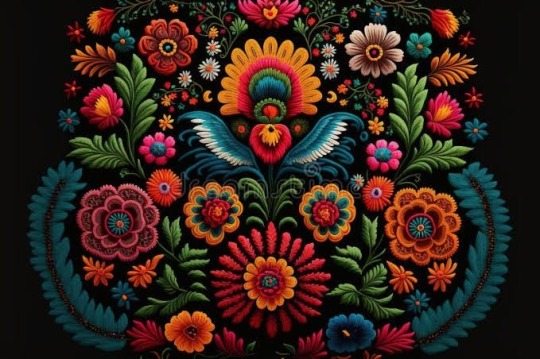
5 Los Alebrijes
Como se hacen
Encontrar un buen árbol para realizar la artesanía la madera se pela y se trabaja cuando está verde y húmeda para que no se raje o astille al tallarla la herramienta es un machete filoso para que corte la madera, el trazo y la horma de la figura; un juego de cuchillos bien afilados, gurbia, escoplos o formones y berbiquí, para el tallado, y lijas para el terminado fino; así como clavos y martillo para la unión de algunas partes. Una vez hechas las figuras, se dejan secar durante varios días, para evitar que se partan o se rajen, y se curan para que no se piquen. La elaboración y terminado de cada pieza puede tomar desde unos días hasta semanas, dependiendo de la complejidad de la talla, el acabado fino, curado y decorado la figura
Materiales:
- [ ] Madera de cópalito
- [ ] Machete filoso
- [ ] Juegos de cuchillos
- [ ] Gurbia
- [ ] Escoplos
- [ ] Clavos y martillo
- [ ] Lijas
- [ ] Pintura
- [ ] Pincel
En qué ciudad se realizan esta artesanía: San Martín Tilcajete, lugar famoso por la elaboración de Alebrijes, figuras muy diversas desde fauna hasta seres fantásticos, expresiones propias de la cosmovisión de los grupos originarios de Oaxaca.
Cuál es su utilidad: Los alebrijes llegaron para quedarse, hoy por hoy forman parte de la cultura mexicana tanto en el ámbito artístico como en el social. Un ejemplo de ello es su recurrente presencia en la celebración de Día de Muertos, pues son colocados para decorar ofrendas, inclusive son las estrellas de la buena suerte.
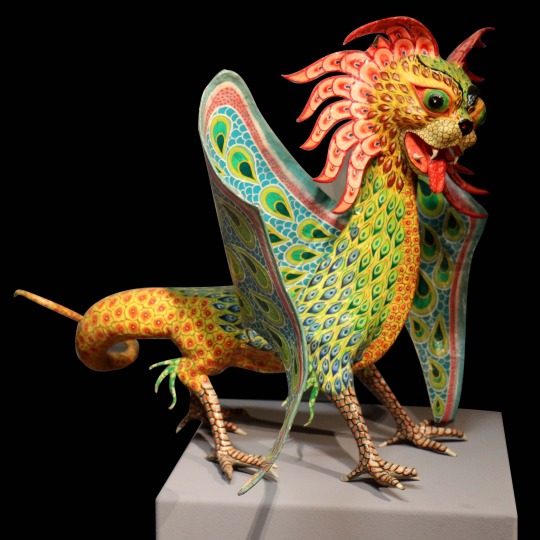
Bibliografía estilo Appa
- [ ] Porto, J. P., & Gardey, A. (2021b, septiembre 10). Artesanía - Qué es, competencia, definición y concepto. Definición.de. https://definicion.de/artesania/
- [ ] Conabio. (s. f.-b). Artesanías | Biodiversidad mexicana. Biodiversidad Mexicana. https://www.biodiversidad.gob.mx/diversidad/artesanias#
- [ ] Cano, M. (2022b, diciembre 21). Historia y proceso del Barro Negro. CEMCUI. https://cemcui.com.mx/blogs/noticias/historia-y-proceso-del-barro-negro
- [ ] Barro negro. (s. f.-b). Secretaría de Cultura/Sistema de Información Cultural. http://sic.gob.mx/ficha.php?table=artepmex&table_id=40#:~:text=Registro%20Barro%20negro&text=Torno%20primitivo%2C%20tepalcates%20para%20alisar%2C%20bru%C3%B1idor%20de%20piedra.&text=Se%20prepara%20
- [ ] el Barro negro - Casa de Mexico. (2022b, junio 17). Casa de Mexico. https://www.casademexico.es/barro-negro-de-oaxaca/#:~:text=El%20barro%20negro%20principalmente%20tiene,y%20formas%20vegetales%2C%20muy%20bellas
- [ ] Nadia. (2019b, agosto 30). Palma. Oaxaca Lindo. https://oaxacalindo.com/palma/
- [ ] Palma Mixteca - tekiti.mx. (s. f.-b). tekiti.mx. https://tekiti.mx/artesanias/palma-mixteca/
- [ ] De Información Agroalimentaria y Pesquera, S. (s. f.-b). Tejidos del campo. gob.mx. https://www.gob.mx/siap/articulos/tejidos-del-campo#:~:text=Artesan%C3%ADas%20tales%20como%3A%20canastos%2C%20tortilleros,con%20la%20hoja%20de%20palma
- [ ] Ochoa, A. (2020b, octubre 28). Alebrijes, las figuras fantásticas más coloridas del arte popular mexicano. Architectural Digest. https://www.admagazine.com/gran-diseno/alebrijes-las-figuras-fantasticas-mas-coloridas-del-arte-popular-mexicano-20201028-7622-articulos#:~:text=%C2%BFC%C3%B3mo%20se%20hace%20un%20alebrije,usando%20cart%C3%B3n%20para%20darle%20volumen
- [ ] Wwwvidal. (2015b, septiembre 13). MAGIA y COLOR DE LOS TAPETES DE TEOTITLÁN DEL VALLE - Vidalturismo.com. vidalturismo.com. https://
- [ ] vidalturismo.com/magia-y-color-de-los-tapetes-de-teotitlan-del-valle/Motilla, F. (2022, 6 octubre). El proceso de elaboración del Alebrije Oaxaqueño. Arte Huichol - Marakame. https://www.artemarakame.com/es-us/blogs/sobre-los-alebrijes-oaxaquenos-2/el-proceso-de-elaboracion-del-alebrije-en-oaxaca
- [ ] Visita los Pueblos Artesanos de Oaxaca (Barro Negro, Alebrijes, Telares) - Minimo 4 pasajeros. (s. f.-b). https://www.circuitospormexico.com/visita-de-un-dia-a-los-pueblos-artesanos-de-oaxaca-barro-negro-alebrijes-telares.html#:~:text=Posteriormente%20visitar%C3%A1%20el%20pueblo%20de,los%20grupos%20originarios%20de%20Oaxaca
- [ ] Nezhualcóyotl, L. S. (2023b, julio 28). Animales, monstruos, obras de arte. . . ¿Qué son los alebrijes? La Salle Neza. https://www.lasalleadistancia.com/post/animales-monstruos-obras-de-arte-qu%C3%A9-son-los-alebrijes#:~:text=Los%20alebrijes%20llegaron%20para%20quedarse,estrellas%20principales%20de%20los%20desfiles
- [ ] Dancastle. (2023b, mayo 11). 10 beneficios de tener una alfombra o tapete de lana. Alfombras de Lana. https://alfombrasdelana.com/10-beneficios-de-tener-una-alfombra-o-tapete-de-lana/#:~:text=Son%20un%20excelente%20aislante%20t%C3%A9rmico,las%20bajas%20temperaturas%20del%20suelo
- [ ] Audaces. (2023b, octubre 19). Descubre en qué máquinas textiles tienes que invertir para tu producción. Audaces. https://audaces.com/es/blog/maquinas-textiles
- [ ] Olga. (2020b, mayo 7). Procesos y maquinaria en la industria textil. Textil | Ferrer-Dalmau. https://fdtextil.es/procesos-y-maquinaria-en-la-industria-textil/#:~:text=El%20proceso%20textil%20se%20puede,tejidos%20de%20la%20mayor%20calidad
- [ ] Proceso | Zeny Fuentes & Reyna. (s. f.-c). https://zenyfuentesyreyna.com/creacion-de-alebrijes/
5 notes
·
View notes
Text
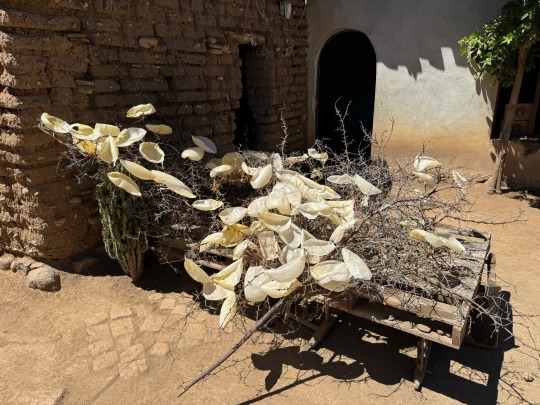
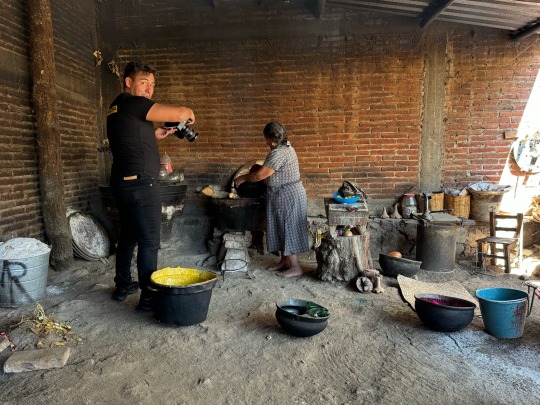
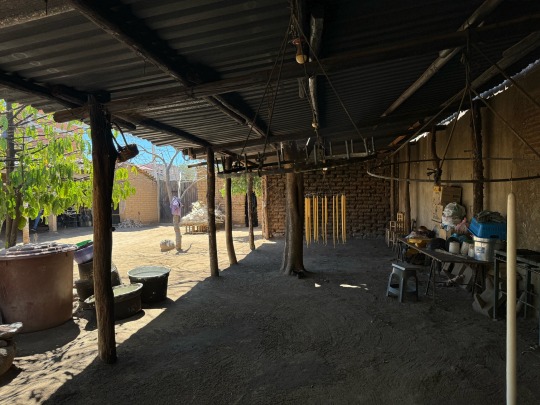

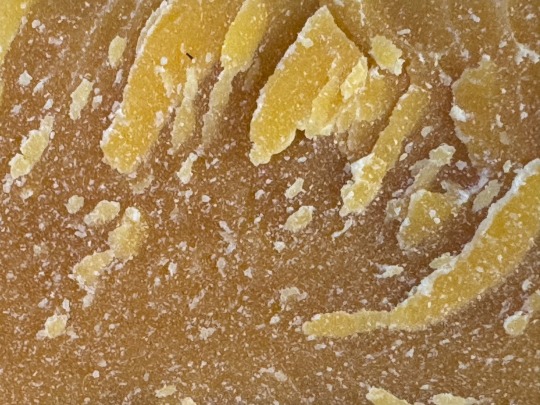
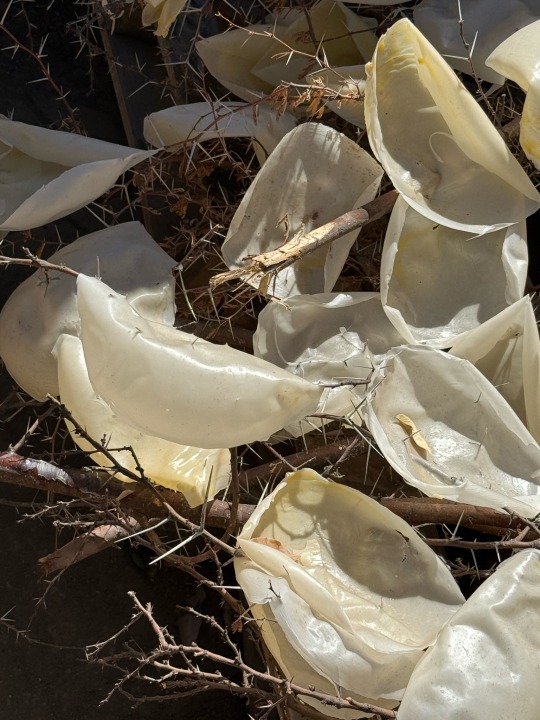
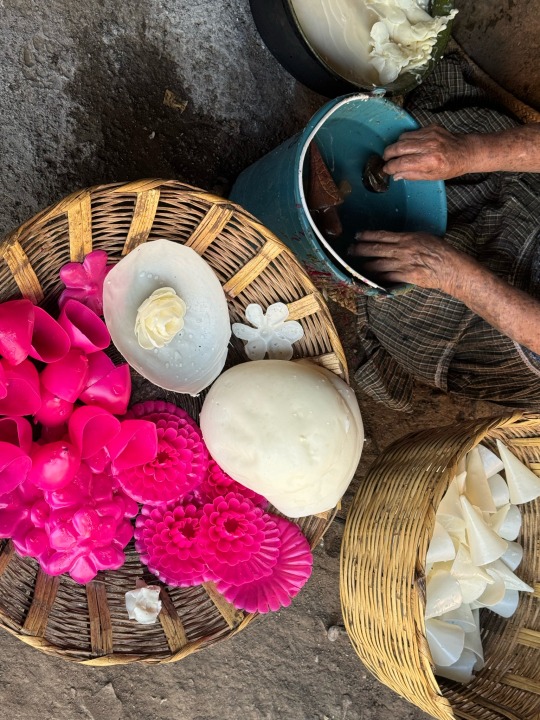
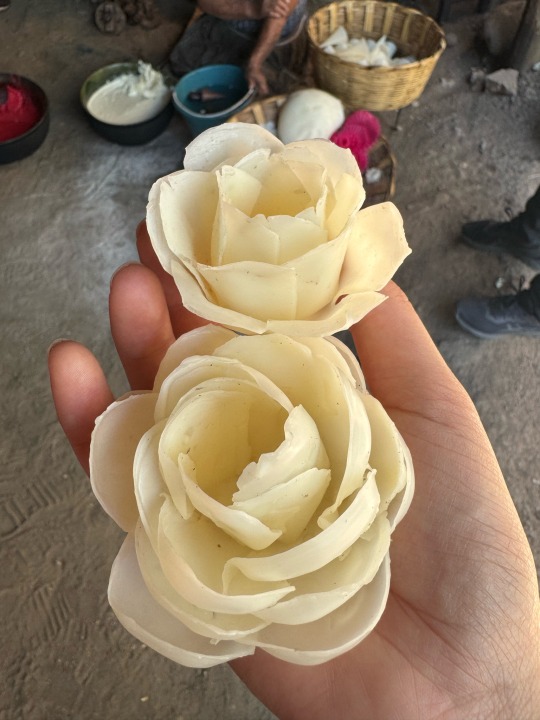
2/27/24
Día en Teotitlán del Valle
Conseguí un taller de velas, Casa Viviana, en el pueblito de Teotitlán, uno de tres que siguen esta tradición. La ancianita zapoteca que ves es la famosa Vivi, tiene casi 78 años y tiene la mayoría de la vida cultivando esta práctica. Cuando llegue al taller, toque el timbre varias veces sin una respuesta. Al pensar que no me iban abrir, empecé a irme a buscar otro taller. Dos hombres salen del auto estacionado por la puerta y me preguntaron si iba al taller. Les dije si pero que no pensaba que había alguien allí, al decir eso, Viví abrió la puerta. Entramos los tres y la vimos prepararse para derretir la cera. Mientras la esperamos, fui observándola y platicando con los chicos de ves en cuando. Fueron unos creadores de contenido que comparten diferentes aspectos de la cultura latina. Uno me dijo que escriben guiones para sus videos y intentaron a darle a la pobre Vivi lo que pareció un crash course de media training. La pidieron hablar en su lengua, se sintió extractivo. Eran unos tontos, preguntan pero no escuchan.
1 note
·
View note
Text
Oaxaca’s Culinary and Cultural Delights: Mexico’s Southern Gem

Nestled in the foothills of the Sierra Madre, Oaxaca (pronounced wah-HAH-kah) is a vibrant city in southern Mexico that enchants visitors with its rich traditions, colonial architecture, and tantalizing cuisine. Known as the gastronomic heart of Mexico, Oaxaca also serves as a hub of indigenous culture and artistry. Whether you’re a foodie, history enthusiast, or art lover, this city offers something special for everyone.
Exploring Oaxaca’s Culinary Heritage
Oaxaca is often referred to as the “Land of the Seven Moles,” a nod to its diverse and flavorful sauces that define Oaxacan cuisine.
Traditional Markets
Visit Mercado Benito Juárez and Mercado 20 de Noviembre to experience authentic flavors. Sample freshly made tlayudas, tamales wrapped in banana leaves, and chapulines (crispy grasshoppers).
Don’t miss tasting hot chocolate made with hand-ground cacao and cinnamon—a cherished Oaxacan tradition.
Mole Magic
Try mole negro, a rich sauce made with over 30 ingredients, including chocolate, chilies, and spices. Pair it with chicken or enchiladas for a classic dish.
Join a local cooking class to learn the secrets of crafting these complex flavors.
Mezcal Tastings
Oaxaca is the birthplace of mezcal, a smoky spirit made from agave. Visit mezcalerías to sample varieties and learn about the artisanal production process.
Cultural Treasures in Oaxaca
Oaxaca is a UNESCO World Heritage Site, thanks to its well-preserved colonial architecture and vibrant cultural traditions.
Zócalo and Santo Domingo Church
The city’s main square, or Zócalo, is a lively hub surrounded by cafes and street performers.
Visit the stunning Templo de Santo Domingo de Guzmán, a baroque masterpiece with an attached museum showcasing Oaxaca’s history.
Textiles and Crafts
Explore local workshops in nearby villages like Teotitlán del Valle, known for handwoven rugs dyed with natural colors.
Browse artisan markets for pottery, alebrijes (colorful carved animals), and embroidered garments.
Day Trips from Oaxaca
The region surrounding Oaxaca City is equally rich in history and natural beauty.
Monte Albán
Discover the ancient Zapotec ruins of Monte Albán, perched on a hilltop with panoramic views of the valley.
Marvel at the impressive pyramids, ball courts, and intricate carvings that reveal the sophistication of this ancient civilization.
Hierve el Agua
A natural wonder resembling petrified waterfalls, Hierve el Agua is perfect for hiking and swimming in mineral-rich pools.
Mitla and Mezcal Villages
Explore the Mitla archaeological site, an ancient Mixtec ceremonial center known for its intricate geometric stonework.
Tour nearby mezcal-producing villages for a deeper dive into this iconic Oaxacan spirit.
Oaxaca’s Festivals and Traditions
Guelaguetza Festival
Held in July, this indigenous cultural festival showcases traditional dances, music, and costumes from Oaxaca’s diverse regions.
Day of the Dead (Día de los Muertos)
Experience the city’s vibrant celebrations in late October and early November, featuring ornate altars, marigold decorations, and lively parades.
Practical Travel Tips
When to Visit
October to April offers pleasant weather and coincides with major festivals.
What to Pack
Comfortable walking shoes, lightweight clothing, and a reusable water bottle.
Getting Around
The city is walkable, but taxis and colectivos (shared vans) are convenient for trips to surrounding areas.
Travel Assistance
To make the most of your Oaxacan adventure, consider consulting experienced travel agencies like Roomchai Limited, which can help plan personalized itineraries, including guided market tours, mezcal tastings, and visits to archaeological sites.
Conclusion
Oaxaca’s charm lies in its perfect blend of tradition and modernity. From its flavorful cuisine to its stunning ruins and vibrant festivals, this southern gem offers an unforgettable experience that will leave you yearning for more. So, pack your bags and let Oaxaca’s culinary and cultural delights captivate your senses.
#Oaxaca#mexico#roomchai#roomchailimited#travel#dhakatravel#traveltips#bangladeshitravelers#travelagencies
1 note
·
View note
Text

Un retrato en Teotitlán del Valle, Oaxaca, México. Durante 23 años viajé por América como fotógrafo, periodista y viajero. En mi libro El Caminar del Sol comparto muchas de las experiencias que viví siguiendo, además, las huellas del conquistador Bernal Díaz del Castillo y otros conquistadores.
0 notes
Text
Explore the Best of Oaxaca in 5 Days with Travel Report Ai
Planning a trip to Oaxaca and wondering how to make the most of your time? Travel Report Ai has you covered with the perfect 5-day itinerary. From vibrant markets to ancient ruins, Oaxaca offers a rich blend of culture, history, and cuisine that you won't want to miss.
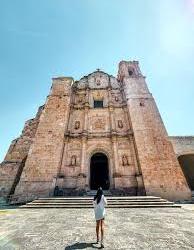
Day 1: Exploring Oaxaca City
Start your journey in the heart of Oaxaca City. Stroll through the colorful streets, visit the iconic Zócalo (main square), and explore the Santo Domingo Church. Be sure to visit the Oaxaca Textile Museum and take in the local art scene at various galleries.
Day 2: Monte Albán Archaeological SiteDiscover the ancient Zapotec ruins of Monte Albán, one of the most important archaeological sites in Mexico. Spend the day exploring these impressive ruins, learning about the region’s fascinating history, and enjoying panoramic views of the surrounding valleys.
Day 3: Visit the Markets and Taste Local CuisineNo trip to Oaxaca is complete without indulging in its famous cuisine. Spend the day visiting the bustling markets like Mercado 20 de Noviembre, where you can try traditional dishes like mole, tlayudas, and chapulines (fried grasshoppers). Take a food tour to discover more of Oaxaca’s culinary delights.
Day 4: Day Trip to Hierve el Agua and MitlaTake a day trip to the natural wonder of Hierve el Agua, a stunning set of petrified waterfalls. Afterward, visit the archaeological site of Mitla, known for its intricate mosaics. End the day with a relaxing soak in the mineral-rich waters of Hierve el Agua.
Day 5: Mezcal Tour and Artisan VillagesOaxaca is known for its world-class mezcal. On your last day, embark on a mezcal tour to learn how this famous spirit is made, and enjoy tastings from local producers. While you’re at it, visit the nearby artisan villages of Teotitlán del Valle and San Bartolo Coyotepec, where you’ll find beautiful textiles and black pottery.
Make the most of your 5 days in Oaxaca with this comprehensive guide from Travel Report Ai! Whether you're a history buff, a foodie, or an adventure seeker, this itinerary has something for everyone. Visit our website to learn more and start planning your trip to Oaxaca today.
#5DaysInOaxaca#OaxacaTravel#TravelReportAi#OaxacaItinerary#MezcalTour#MonteAlban#HierveElAgua#OaxacaMarkets#OaxacaFoodTour
0 notes
Text
Jóvenes oaxaqueñas son galardonadas en Suecia por proyecto de filtración de agua
Diseñaron un sistema de filtración casero para que su comunidad, Teotitlán del Valle, Oaxaca, purifique las aguas residuales del teñido textil, para reutilizarlos en el cultivo de vegetales Continue reading Jóvenes oaxaqueñas son galardonadas en Suecia por proyecto de filtración de agua
1 note
·
View note
Text
Ex secretario de Finanzas de Oaxaca gana amparo
OAXACA GENERAL
El ex secretario de Finanzas del Gobierno del Estado, Gerardo Cajiga Estrada, obtuvo un amparo en el juzgado décimo de distrito y en el cual ordena reponer al juez de control la comunicación de la imputación y la vinculación a proceso debido a las fallas del agente del Ministerio Público.
Para ello ordenó que en audiencia se le comunique imputación, pero con fundamentos al ser acusado del delito de peculado.
La resolución fue dictada el pasado 18 de enero del año 2018 por el juez décimo de distrito en el amparo número 1160/2017.
Sin embargo, el abogado defensor de Gerardo Cajiga Estrada, decidió recurrir al recurso de revisión y estudiar a fondo el caso, ante los errores en la integración del expediente y violación al libre proceso.
Por ello, el juez décimo de distrito emitió una resolución el 26 de febrero y en el cual acordó enviar el caso al Tribunal Colegiado en Materia Penal y Administrativa del Décimo Tercer Circuito, donde será analizado si ratifican que un juez de control vuelva a reponer las audiencias de comunicación de la imputación y vinculación a proceso o le otorga la libertad.
SIGUE BAJO ARRAIGO
Gerardo Cajiga Estrada fue detenido el 19 de septiembre del año 2017 en la Ciudad de México y trasladado vía aérea a la entidad oaxaqueña para quedar a disposición de un juez de control de Tanivet, en el circuito judicial de Valles Centrales, en Reyes Mantecón.
Junto con Cajiga Estrada, fue detenido Enrique Celso Arnaud Viñas, quien sigue detenido en el penal de Santa María Ixcotel.
El 6 de octubre del 2017, Gerardo Cajiga, fue llevado a prisión domiciliaria en San Andrés Huayapam, al indicar la Fiscalía General del Estado que fue uno de los beneficios que obtuvo por ser testigo y apoyar en las investigaciones en contra de otros funcionarios.
LA ACUSACIÓN
Durante la audiencia de control de la detención y comunicación de la imputación, a los tres ex funcionarios del sexenio anterior (Gerardo Cajiga, Arnuad Viñas y Germán Tenorio) de la causa penal 610/2017 del juzgado de control de Tanivet, les leyeron las constancias que obran en el voluminoso expediente que se inició con la denuncia del director jurídico de la Contraloría y Transparencia Gubernamental, Celestino Rosas Platas.
En su denuncia menciona que del 14 al 20 de junio del 2012, la Secretaría de Finanzas realizó la transferencia de 100 millones de pesos a los Servicios de Salud de Oaxaca por el programa "Crédito Puente" que fue inventado por los funcionarios.
El primer pago se realizó con la orden 5154 a través de Bancomer por la cantidad de 40 millones, el otro pago fue de 20 millones el 31 de julio del 2012 a través de la misma institución bancaria en la orden 5146, el mismo día otros 20 millones, y el cuarto fue el mismo 31 de julio con la orden 5148 a la misma institución bancaria por la cantidad de 20 millones de pesos.
El programa puente
En la carpeta de investigación existen los expedientes administrativos, 250/YQD2916 y 276/YQD/2016, donde certifican que existen oficios de la transacción del dinero a los Servicios de Salud y la autorización realizada por el titular de la dependencia.
El proyecto fantasma denominado puente contemplaba que realizarían trabajos de mejoramiento y ampliación en hospitales en la entidad oaxaqueña, en diversos municipios, expuso Jorge Emilio Iruegas Álvarez, ante el juez de control.
En el proyecto estaba remodelar y amueblar los hospitales de Santa María Huatulco, San Agustín Loxicha, San Pedro Huamelula, Sola de Vega y Teotitlán de Flores Magón.
Asimismo, contemplaban la ampliación de los hospitales de Santo Domingo Tehuantepec , Asunción Nochixtlán, centro de salud de Loma Bonita, Santa María Lachixío, San Jacinto Amilpas, San Francisco Ixhuatán y Puerto Escondido.
Iruegas Álvarez expuso que existen las investigaciones realizadas por el director de la unidad de investigación criminal de la Fiscalía General del Estado, así como las auditorías realizadas y por lo cual aún continúa con la finalidad de establecer quienes más podrían estar implicados.
En la carpeta de investigación también existen dictámenes contables, los informes de los depósitos bancarios.
0 notes
Text










We walked around the city centre looking at all kinds of art: ceramics, weaving, drawing, printing, etc. We were told there are small villages surrounding Oaxaca that focus on each specific art. For example, Teotitlán del Valle is famous for their textiles, especially hand-woven rugs. San Martín Tilcajete is famous for their weaving baskets and colourful decorations. Check out:
San Bartolo Coyotepec is famous for their black ceramics. I had thought of going there but I didn't like their style so much.
Back in Oaxaca, we walked along the pedestrian street C. Macedonio Alcalá and visited every art store along the street. We found an exposition of beautiful handmade rugs and bags, and were so close to buying some.
If you like art prints, we recommend Espacio Zapata and 2020 Arte Contemporaneo on C. Porfirio Díaz, both for their range in styles and collective model.
0 notes
Text





Colourful rugs by Martha Clippinger.
“I’ve always had a kind of addiction to color,” says artist Martha Clippinger. “And I think Mexico fed that addiction, because it’s a country that’s just so saturated in color.”
A visual arts and art history double major while at Fordham, Clippinger spent six months last year on a Fulbright grant studying traditional crafts such as weaving and natural dyes in and around Oaxaca, Mexico.
Though she had lived in Mexico City for a month after completing her MFA in 2008, it was a trip she took to Puebla, led by art history Professor Barbara Mundy, as a junior at Fordham that first fueled her love of the country and its traditional crafts.
“It was an action-packed week, and I was just blown away. The people were wonderful, the landscape was incredible, the food was delicious. It was just overstimulating and thrilling. I felt very comfortable and happy there. And I knew I wanted to go back.”
The trip included a visit to some weavers in Oaxaca who used natural dyes. “I had never had access to that type of color. There was this whole world of abstraction and color that I hadn’t been exposed to before Fordham, before that trip. All of these forms that attracted me to modern art but were now being perceived outside of that context, in a much more ancient place.
Clippinger collaborated with master weavers Licha González Ruiz and Agustín Contreras Lopez of Teotitlán del Valle, Oaxaca, Mexico to create tapetes (Spanish for “rugs”) on view in the exhibit. She said the Zapotec architecture of Oaxaca inspires her designs, while the environs of the region inform the intense hues of the woolen yarns, which are hand dyed by Ruiz and Lopez.
“I often select the rug’s colors in person, based on the dyed wool that Licha and Agustín have available in their workshop,” Clippinger said. “This adaptative process often leads to shifts in color from the original design, but as with the piecing of my quilts or constructing paintings from scraps of wood, I look forward to the surprises that result from a flexible and intuitive approach to making.”
https://warren-wilson.edu/.../martha-clippinger.../
9 notes
·
View notes
Text
Live green
Greetings from cold, gray, windy, and rainy Northern California. I arrived a couple of weeks ago and am still in recovery from a three-day wedding in Teotitlán del Valle right before I departed for winter in the San Francisco Bay Area. Family, friends, frozen fingers, and a severe case of sticker shock have also contributed […]Live green

View On WordPress
0 notes
Text
La Premio Nacional de Artes Abigail Mendoza lamenta el desdén a la cocina tradicional
Originaria de Teotitlán del Valle, Oaxaca, doña Abigail Mendoza Ruiz fue premiada en el área de Artes y Tradiciones Populares. Escrito por Fabiola Palapa y Ángel Vargas La cocinera tradicional zapoteca Abigail Mendoza Ruiz, tras recibir este jueves en el Palacio de Bellas Artes el Premio Nacional de Artes y Literatura, en el campo de Artes y Tradiciones Populares, dijo que en México hay falta de…

View On WordPress
0 notes
Text

Teotitlán del Valle Cultural Center, Oaxaka, Mexico - PRODUCTORA
The tall space, the ceiling of the second floor curving inwards, the slanted window right above...
0 notes